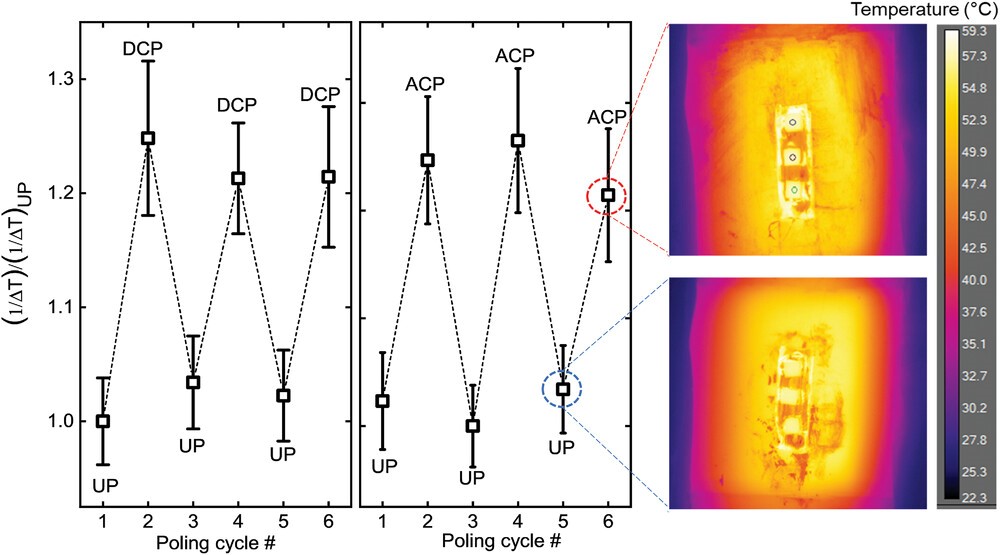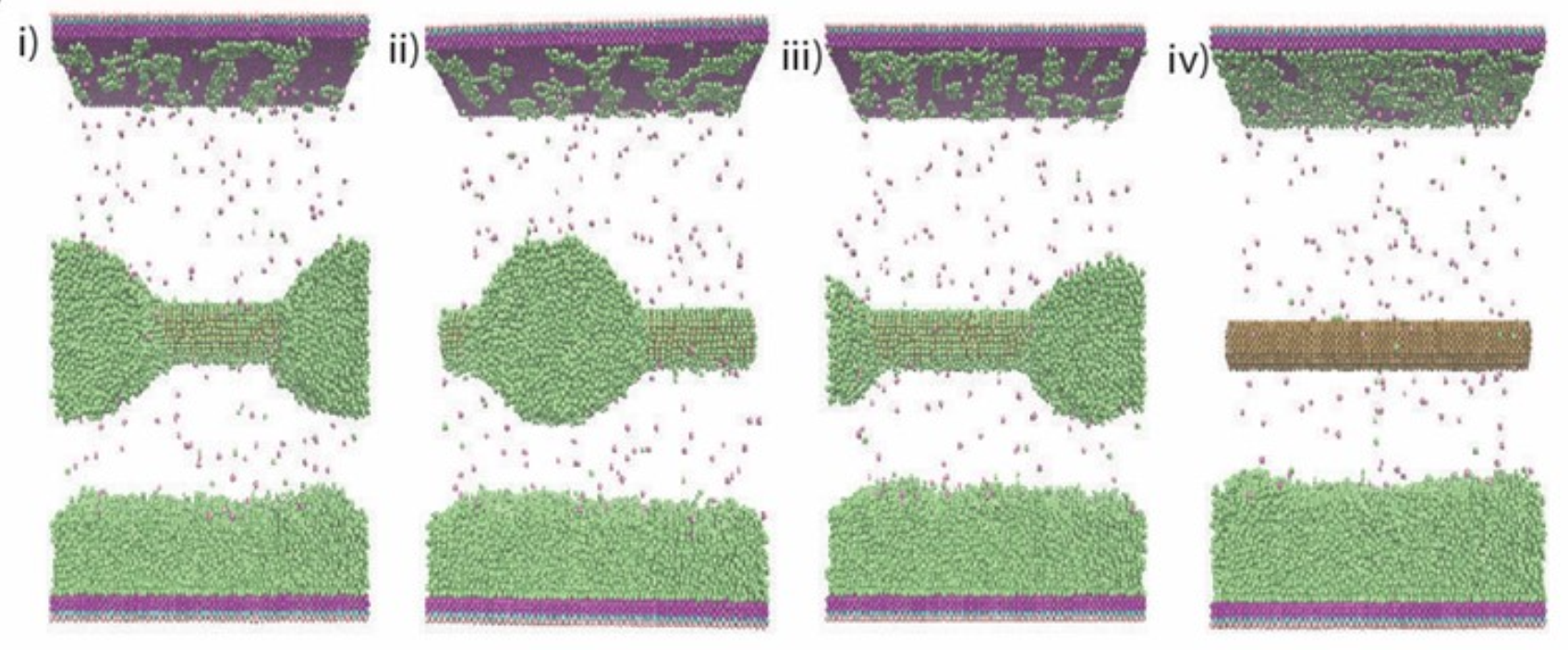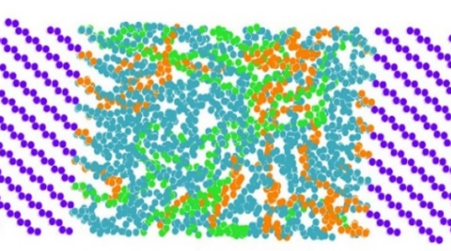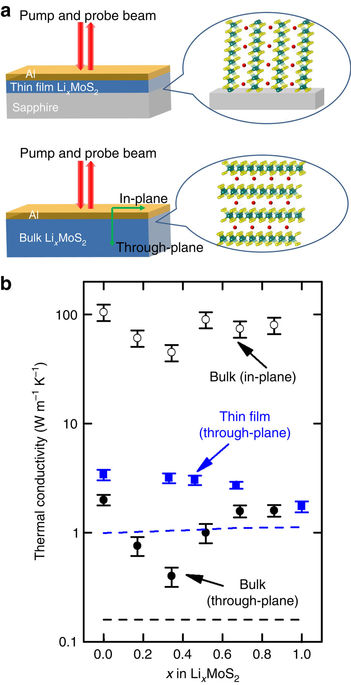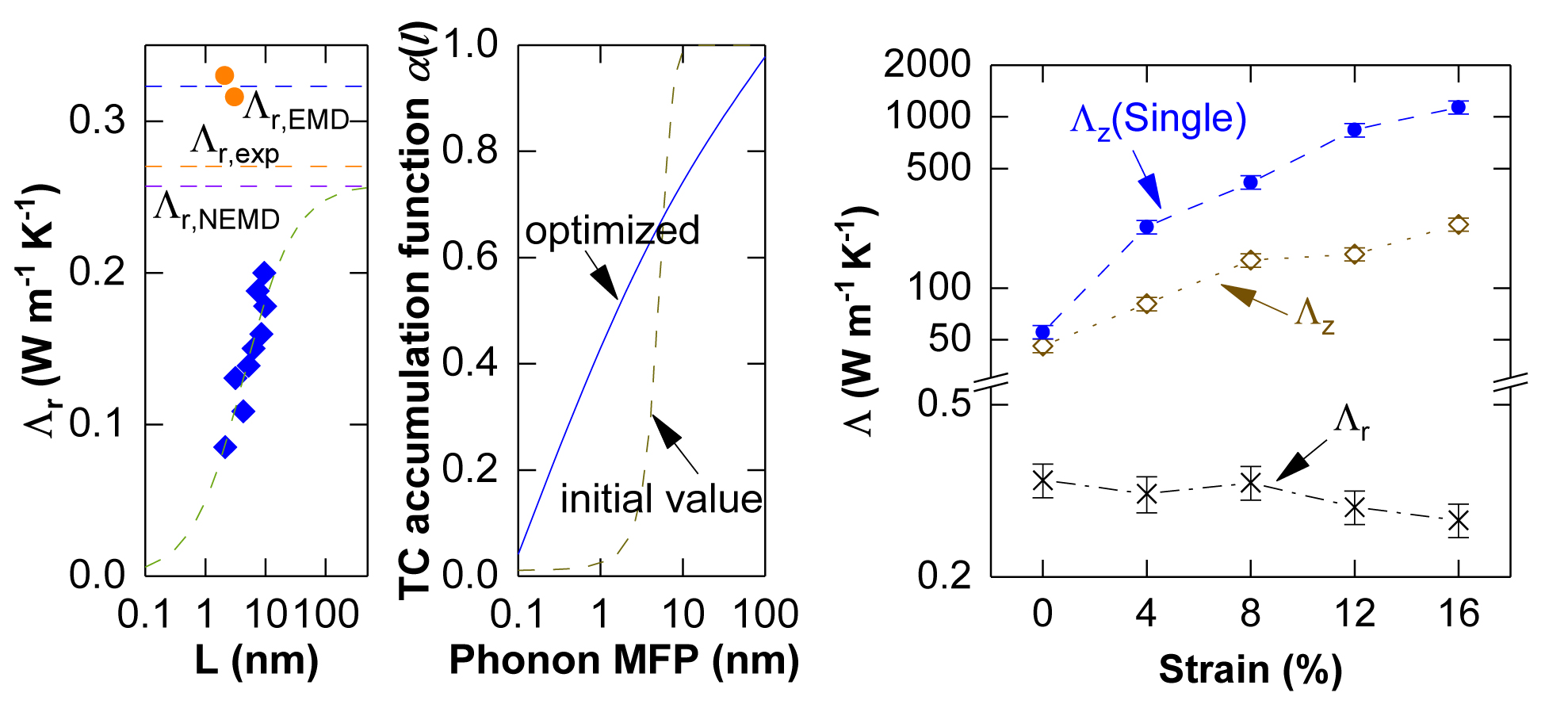Welcome to the Liu Research Group
Dr. Liu leads a research group focusing on developing computational and experimental tools for understanding new transport phenomena in micro/nano-scale structures, and applying the results to design nano-engineered functional materials, chiral materials, quantum materials, and soft matter, for water, energy, and quantum information related applications.
He is currently working on (1) applying ultrafast laser-based pump-probe system for characterizing thermal, elastic, and magnetic properties of materials (e.g. TDTR, TRMOKE); (2) developing numerical simulation tools for understanding energy transport mechanisms in soft matters and hybrid materials (e.g. molecular dynamics, density functional theory, lattice dynamics); (3) establishing novel functional thermal materials, especially soft materials and hybrid materials. Those materials serve as elementary building blocks for thermal management and energy conversion/storage devices and systems with enhanced performance.
Dr. Liu’s graduate students are motivated to learn; they tend to solve multidisciplinary and challenging problems. His students have the opportunity to learn multidisciplinary topics in optics, electronics, thermal science, materials, and solid-state physics.
(Updated on August 2024)
We have multiple Ph.D. and postdoc openings now in the group. If you are interested, you can send an email to jliu38@ncsu.edu, and attach your CV and transcript.
We have thesis-based master student position openings in the group. Highly-motivated students who perform well during the master period can also be converted to Ph.D. students.
Chiral-phonon-activated spin Seebck (CPASS) effect and Chirality-induced spin selectivity (CISS) in chiral materials
We recently reported the spin current generation in an adjacent metallic layer attached to a non-magnetic chiral hybrid organic-inorganic perovskites when subjected to a thermal gradient, induced by chiral phonons possessing angular momentum. This work has been published in Nature Materials. This funded Multi-University Research Project will explore the fundamental mechanisms of the transport and interactions of chiral phonons.
We also find that when injecting pure spin into chiral materials, direction matters. This work has been published in Science Advances.
Domain wall engineering of thermal conductivity in ferroelectric materials
We recently demonstrated the thermal conductivity modulation at room temperature in bulk scale (millimeter thick) using ferroelectric PMN-PT single crystals. Thermal conductivity measurements can be used as an alternative method to indicate the domain wall density and distribution in ferroelectric materials after poling. This work has been published in Advanced Materials. This NSF-funded project will explore the possibilities of using ferroelectric materials as a thermal switch.
We also find how to solve the long-standing challenge for piezoelectric materials, to electrically de-pole the re-pole piezoelectric crystals without heat treatment. This work has been published in Nature Communications.
Modeling Water Evaporation and Condensation Dynamics at the Nanoscale
Understanding the water state and water dynamics for evaporation and condensation is essential for many engineering systems. We recently applied a methodology to achieve steady-state water evaporation and condensation in molecular dynamics simulations and used this modeling system to investigate the water dynamics in fibrous membranes and hydrogels. See our recent work at the Journal of Molecular Liquids. More exciting results are to come. This NSF-funded project will explore the rational design of membrane design for water desalination.
Thermal Transport in Oriented Semicrystalline Polymers
The understanding on the thermal transport in the ultra-drawn semicrystalline polymer fibers or films is still lacking. We recently built an ideal repeating unit of semicrystalline polyethylene and studied their dependence of thermal conductivity on different crystallinity and interlamellar topology using molecular dynamics simulations. See our recent work at Journal of Applied Physics. More interesting results are to come.
Thermal Transport in 2D Materials and van der Waals Heterostructures
Thermal conductivity of 2D materials and van der Waals heterostructures is of interest for energy storage, nanoelectronics, and optoelectronics. The effect of defects and disorders is important to know. We simulated the effect of mass disorder and stacking disorder on the anisotropic thermal conductivity using MD. We also measured the effect of structural and compositional disorders by TDTR and other characterization tools. See our recent work at Nature Communications. This NSF-funded project will explore the mechanism of thermal transport in layered materials and push the lower limit of thermal conductivity.
Recently we published in ACS Nano to show the anomalous dependence of thermal conductivity and elastic modulus in two-dimensional hybrid organic-inorganic metal halide perovskites.
Anisotropic and Strain Effects in Polymers and Hydrogels
Thermal transport in the axial direction of polymer fibers has been extensively studied, while the thermal conductivity in the radial direction remains unknown. Because polymer fiber is an important type of high anisotropic materials, we measured the strain effect of thermal conductivity in the radial direction using TDTR (ACS Macro Letters) and simulated this effect using MD(Applied Physics Letters). This NWI-funded project will explore the mechanical response of polymers and hydrogels.
More research and publications here.



